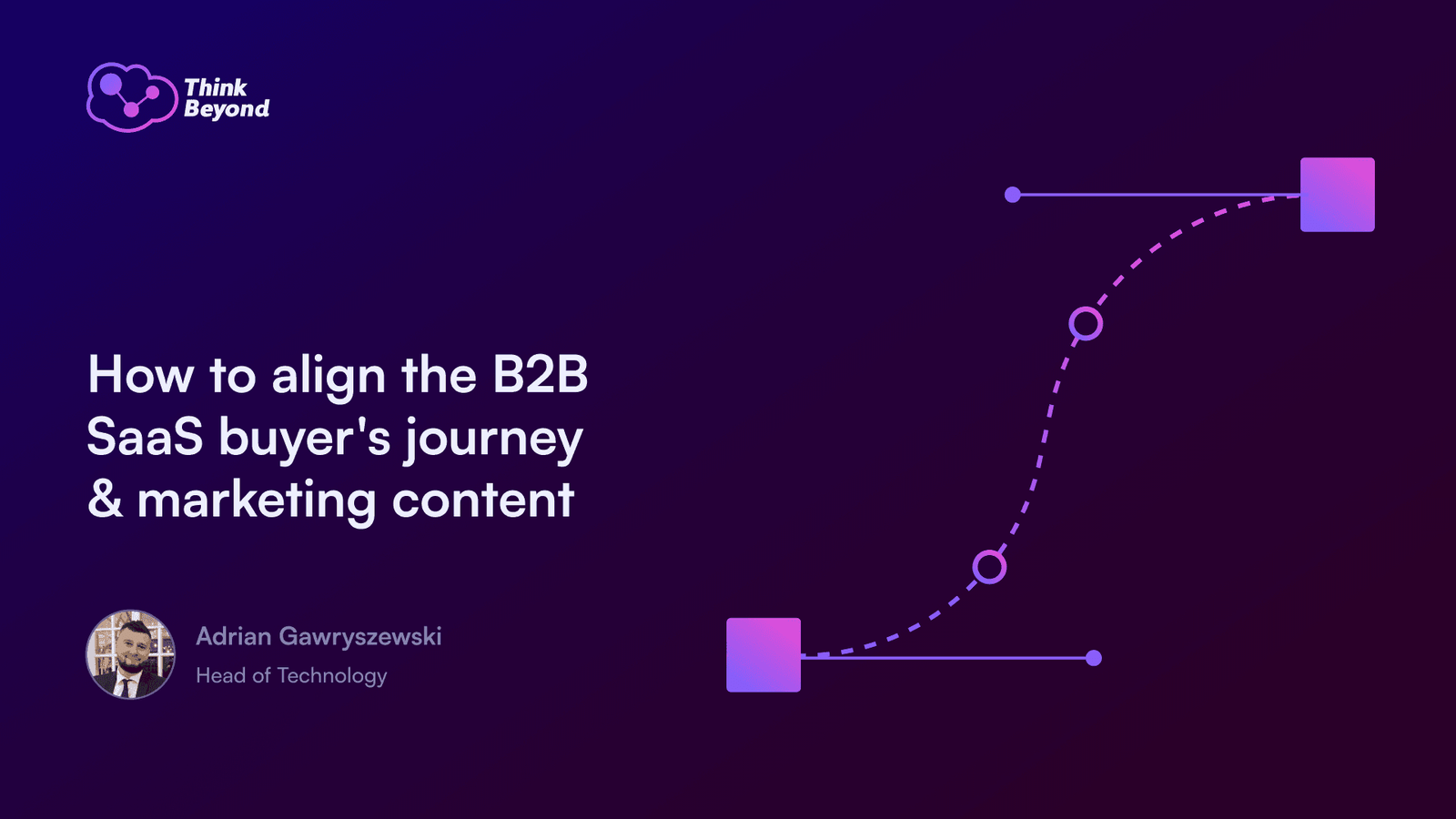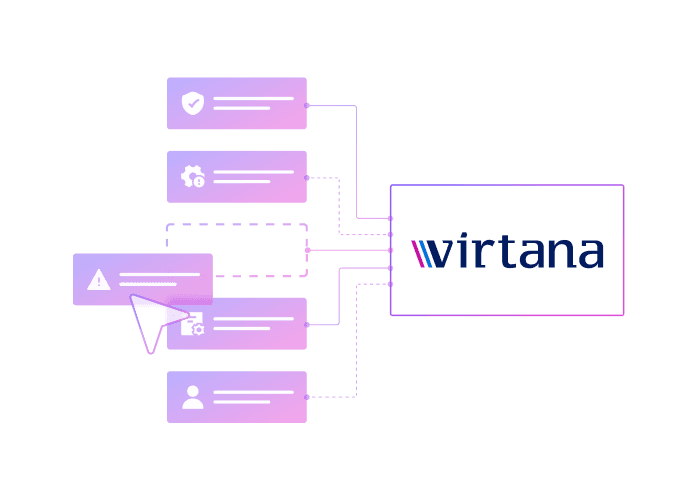
Guiding potential customers through a well-structured buyer’s journey is crucial for success, especially for a B2B SaaS market with high customer acquisition costs and a complex sales cycle.
The buyer’s journey, which spans from initial awareness to final decision-making, is a key process. It determines whether a prospect will become a loyal customer.
Many B2B SaaS companies struggle to align their marketing content with the distinct stages of this journey, leading to missed opportunities, confused customers, and lower conversion rates.
Imagine if your marketing efforts could seamlessly guide your prospects from discovering a problem to choosing your solution as the best fit. By strategically aligning your marketing content with each stage of the buyer’s journey, you can significantly enhance lead generation, nurturing, and conversion. This alignment not only addresses the specific needs and questions of your prospects at every step but also builds trust and credibility.
The only remaining question is: how to align the buyer’s journey and marketing content?
Step one: understand the buyer’s journey
The B2B SaaS buyer’s journey consists of three main stages: Awareness, Consideration, and Decision. Each stage represents a different mindset and set of needs for your potential customers.
By understanding these stages, you can tailor your marketing efforts to meet prospects where they are and guide them toward a purchase.
Define the Buyer’s Journey
You need to define the buyer’s journey specifically for your customers. In the context of B2B SaaS, this journey is often longer and more complex than in consumer markets due to the higher stakes and more involved decision-making processes.
Research what exactly happens at every stage for your ideal consumer and how you can address it:
- Awareness Stage: At this initial stage, potential buyers identify a problem or a need. They may not yet know about your solution or even fully understand the problem itself. The primary goal during this stage is to attract attention and provide educational content that helps them define their issues.
- Consideration Stage: In this middle stage, prospects are actively seeking solutions to their problem. They are researching different options and evaluating various SaaS providers. The objective here is to offer content that positions your product as a viable solution and differentiates it from competitors.
- Decision Stage: At the final stage, prospects are ready to make a decision. They have narrowed down their options and are looking for the best choice. Content in this stage should focus on convincing them to choose your product by highlighting its benefits, demonstrating ROI, and offering proof of success through testimonials and case studies.
Consider specifics of the B2B SaaS market
While doing your research take under consideration a few specifics of the B2B SaaS buyer’s journey. You can develop a more targeted and effective content strategy by understanding these unique aspects.
- Longer sales cycles: the B2B SaaS sales cycle is typically longer due to the higher cost and complexity of the products. Decision-makers often involve multiple stakeholders, requiring a more prolonged period of evaluation and consensus-building.
- Multiple decision-makers: involving several stakeholders in the decision-making process also means that each one will have different concerns and criteria. This necessitates content that addresses varied perspectives, from technical specifications for IT teams to ROI and cost-effectiveness for financial decision-makers.
- Emphasis on relationships: building trust and demonstrating value over time is crucial in B2B SaaS. Prospects need assurance that your solution will integrate well with their existing systems, provide ongoing support, and adapt to their evolving needs.
- Recurring revenue model: B2B SaaS companies rely on subscription models, making customer retention and satisfaction a major aspect. Content should not only focus on acquisition but also on nurturing and supporting long-term relationships.
Step two: map marketing content to each buyer’s journey stage
Aligning your marketing content with the B2B SaaS buyer’s journey involves creating and delivering the right content at the right time. How to ensure that you provide valuable and relevant information that guides prospects through their journey?
Let’s review a few strategies:
Awareness Stage
The main objective during the Awareness stage is to capture attention and educate potential buyers about the problems they are facing. Content should be informative and non-promotional, focusing on identifying and explaining the issues that your target audience might not yet fully understand.
This can be achieved by content types like:
- blog posts,
- white papers,
- infographics,
- social media posts,
- introductory videos.
Here are a few sample strategies you can mix and combine:
- Educational blog posts: write articles that discuss common pain points in the industry and provide insights into trends and challenges. For example, a blog post titled “Top 5 Challenges Facing SaaS Companies in 2024” can attract those looking to understand their problems better.
- White papers and e-books: offer in-depth resources that delve into the specifics of the problems and potential high-level solutions. These can be gated content to capture leads.
- Infographics: use visually appealing infographics to present data and statistics that highlight the impact of the issues.
- Social Media: share bite-sized insights and industry news on platforms like LinkedIn and Twitter to reach a broader audience and drive traffic to your more detailed content.
Consideration Stage
In the Consideration stage your content should help customers compare options and understand why your product stands out. It should be more detailed and solution-focused than in the Awareness stage.
This can be achieved by content types like:
- e-books,
- webinars,
- case studies,
- comparison guides,
- detailed blog posts.
And a few sample strategies you can mix and combine:
- In-depth e-books and guides: Create resources that compare various solutions, including your own, and highlight the benefits and drawbacks of each. Titles like “The Ultimate Guide to Choosing a SaaS CRM” can be very effective.
- Webinars: Host live or recorded webinars that dive deep into how your solution addresses specific problems. Webinars allow for real-time interaction and can demonstrate your expertise.
- Case studies: Share detailed case studies that show how similar companies have successfully used your product. Highlight the problem, the implemented solution, and the results.
- Comparison blog posts: Write articles that compare your product with competitors, focusing on features, pricing, and customer support. Ensure these are unbiased and fact-based to build trust.
Decision Stage
At the Decision stage, your content should be highly persuasive, addressing any final concerns and showcasing the value and ROI of your product. The aim is to convert prospects into customers by providing them with all the information they need to make a confident decision.
This can be achieved by content types like:
- demos,
- free trials,
- product comparisons,
- detailed case studies,
- testimonials,
- FAQs.
And a few sample strategies you can mix and combine:
- Live demos: offer personalized live demos to show exactly how your product works and how it can be tailored to meet the prospect’s needs. Interactive sessions allow for questions and clarifications.
- Free trials: provide free trials or freemium versions of your product to let prospects experience its benefits firsthand. Ensure they have adequate support during this period to maximize their experience.
- Detailed case studies: use in-depth case studies with quantifiable results to demonstrate the effectiveness and ROI of your product.
- Customer testimonials: share testimonials from satisfied customers, particularly those from similar industries or with similar pain points. Video testimonials can be particularly impactful.
- FAQs and product comparison sheets: create detailed FAQs that address common last-minute questions and comparison sheets that clearly outline the advantages of your product over competitors.
Step three: best practices for aligning content
To effectively align your marketing content with the B2B SaaS buyer’s journey, you need to follow best practices that ensure your content is relevant, personalized, and strategically distributed.
Develop Buyer Personas
Creating detailed buyer personas helps you understand the specific needs, challenges, and behaviors of your target audience. This understanding is essential for crafting content that resonates with them at each stage of the buyer’s journey.
- Gather data from existing customers, sales teams, and market research to identify common characteristics and pain points.
- Divide your audience into distinct personas based on role, industry, company size, and other relevant factors.
- Develop detailed profiles that include demographics, job roles, goals, concerns, challenges, preferred content types, and channels.
- Use these personas to guide content creation, ensuring that each piece of content speaks directly to the needs and concerns of a specific persona.
Content Personalization
Personalization makes your content more relevant and engaging by addressing the specific needs of customers. This can significantly increase the effectiveness of your marketing efforts.
- Use data from your CRM, marketing automation platforms, and website analytics to understand user behavior and preferences.
- Implement dynamic content on your website and in emails that changes based on the visitor’s profile or behavior.
- Segment your email lists and target audiences to deliver tailored content that matches their interests and stage in the buyer’s journey.
- Use algorithms to suggest relevant content or products based on previous interactions and preferences.
Integrated Content Strategy
The main goal of an integrated content strategy is to ensure consistent messaging and branding across all marketing channels and touchpoints, providing a seamless experience for prospects.
- Foster collaboration between your marketing and sales teams to ensure that the content supports both lead generation and nurturing efforts. Sales teams can provide valuable insights into the questions and concerns of prospects.
- Promote your content across multiple channels (e.g., email, social media, blog, paid ads) to reach a broader audience and reinforce your message.
Continuous Improvement
The effectiveness of your content strategy depends on your ability to continuously analyze, learn, and adapt based on performance data.
- Track key metrics such as engagement rates, conversion rates, and content performance to understand what’s working and what’s not.
- Conduct A/B tests on different content formats, headlines, and calls to action.
- Gather feedback from customers for insights into their preferences and needs.
- Use the data and feedback to continuously update and optimize your content strategy.
Leveraging Technology
Technology can significantly streamline content creation, distribution, and analysis, making it easier to align your content with the buyer’s journey.
- Deliver personalized content at scale using marketing automation.
- Implement a CMS that allows for easy content creation, management, and personalization.
- Apply analytics tools to track and analyze content performance across different channels.
- Integrate your CRM with your marketing tools to ensure that all customer data is up-to-date and actionable.
Salesforce offers a wide range of tools to support aligning content strategy with the buyer’s journey. As a very popular software, it allows lots of integrations so you can get one centralized place with all the information about prospects and their journey.
That way you can ensure consistent messaging and branding, all while continuously collecting data for verification and improvement.
With additional features like Salesforce Marketing Cloud and Sales Cloud, B2B SaaS companies can also automate repetitive tasks, and personalize engagement.
Final thoughts and conclusion
Aligning a buyer’s journey and marketing content can seem like a complicated task, demanding constant attention, control, and improvement.
It’s also very rewarding when you get it done right and elegantly guide your prospects from discovering a problem to choosing your solution as the best fit. They will become a loyal consumer or even an advocate of good word of mouth for your company.
Crucial advice is this: start with choosing the right tools to support your process. That’s how you make a complicated task a seamless one.
Case Study
Virtana: Salesforce Managed Services
Managing day-to-day Salesforce operations

